90 Bombay 'criminals' have been killed in police encounters in the BJP-Sena regime
In the 28 months since the Bharatiya Janata Party-Shiv Sena government took office in Maharashtra, as many as 90 men have been killed in encounters with the city police. The police insist the men were criminals with a murderous past and were shot dead when they fired at the police. Human rights activists disagree and say the men were murdered in fake encounters. In the case Syed Firdaus Ashraf investigates below -- the first of a series of reports on Bombay's encounter deaths -- even the victim's 'criminal' past has come under scrutiny.
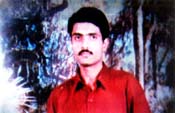 On March 31, tailor Abdul Majid Noorani was having
a cup of tea in a hotel at Juhu, north-west Bombay, when two plainclothes policemen
approached him, flashed their cards and asked him to accompany
them. Reluctantly, he agreed.
On March 31, tailor Abdul Majid Noorani was having
a cup of tea in a hotel at Juhu, north-west Bombay, when two plainclothes policemen
approached him, flashed their cards and asked him to accompany
them. Reluctantly, he agreed.
He was taken in an autorickshaw with his brother
Zuber Noorani following in another rickshaw. En route, the
cops changed direction and managed to elude Zuber.
As chance would have it, Zuber traced the autorickshaw driver
and was informed that during the trip, one of the policemen had
made a call on a mobile phone, and that he, the driver, had overheard
the words kaam ho gaya (the job is done).
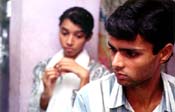 Fearing foul play, Zuber and another brother Qadir
dialled police headquarters in a bid to find out Abdul Majid's
whereabouts, and were informed that their brother was at the Juhu
police station. The two brothers reached the police station at
around 2.15 am, and were informed that their brother was in the
lock-up, and would be released the next morning. They were not, however,
informed of the charges against Abdul Majid.
Fearing foul play, Zuber and another brother Qadir
dialled police headquarters in a bid to find out Abdul Majid's
whereabouts, and were informed that their brother was at the Juhu
police station. The two brothers reached the police station at
around 2.15 am, and were informed that their brother was in the
lock-up, and would be released the next morning. They were not, however,
informed of the charges against Abdul Majid.
After an anxious wait, the two brothers returned
to the police station early next morning. And were informed that
their brother, Abdul Majid, had been killed in an encounter at
Deepa Hotel, Vile Parle, another north-western suburb.
The time of the alleged encounter, as per the police records,
was 11.40 pm.
Police officers claimed they had recovered
from Abdul Majid's pockets, a mysterious map, a letter written
to gangster Anna Shetty, and a fax from Chota Shakeel, an associate
of fugitive gangster Dawood Ibrahim.
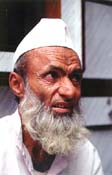 "My son returned from attending a religious
function two weeks ago," says Abdul Majid's bereaved father
Abdul Lateef Noorani. "His name was never
in the police records, how can the police claim that he was a
gangster? When we went to complain to Deputy Commissioner
of Police Satyapal Singh about the incident, he refused to meet
us."
"My son returned from attending a religious
function two weeks ago," says Abdul Majid's bereaved father
Abdul Lateef Noorani. "His name was never
in the police records, how can the police claim that he was a
gangster? When we went to complain to Deputy Commissioner
of Police Satyapal Singh about the incident, he refused to meet
us."
The family suspects the "encounter" was
a fake. The Bombay police refute the allegation and insist that
the deceased was involved in as many as six murders, including
the killing of film producer Mukesh Duggal.
Abdul Majid's is not an isolated instance. In the
28 months of the Bharatiya Janata Party-Shiv Sena government, 90 such encounter deaths have taken place, and a further 267 people have been arrested
under the National Security Act.
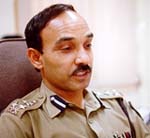 Dr Satyapal Singh, who has since been promoted to
additional commissioner of police, argues, "The deceased was trapped on a tip by our informer.
How can the family deny the incident? When the police fired on
him, he retaliated. Moreover, we have evidence about his involvement
in the murder cases. Besides, the incident occurred at 11.40 pm
on S V Road, which is crowded at that time. If it was a fake encounter
as the family claims, the police would have killed him at some
lonely place."
Dr Satyapal Singh, who has since been promoted to
additional commissioner of police, argues, "The deceased was trapped on a tip by our informer.
How can the family deny the incident? When the police fired on
him, he retaliated. Moreover, we have evidence about his involvement
in the murder cases. Besides, the incident occurred at 11.40 pm
on S V Road, which is crowded at that time. If it was a fake encounter
as the family claims, the police would have killed him at some
lonely place."
Asked if he was personally familiar with the facts
of the case, or whether he had met the family of the deceased,
Dr Singh responded: "A senior officer like me has no need to
go and meet a gangster's family. Moreover, the family members
never complained to me about his death. The only thing they did
was to approach human rights activists, according to what I have
read in newspapers."
The law forbids a policeman from causing even simple
injury while apprehending an accused. The use of firearms by the
police is permissible only if no option is left. And even as a
last resort, the police are supposed to first fire in the air
by way of warning, and even when firing directly at a person,
the regulations say that the policeman should target the lower
part of the torso, and not shoot to kill.
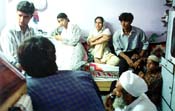 Ninety encounter deaths in 28 months
does not argue a case for the police being too scrupulous in adhering
to those regulations.
Ninety encounter deaths in 28 months
does not argue a case for the police being too scrupulous in adhering
to those regulations.
Abdul Majeed Memon, advocate for the victim's family, has
a point when he argues: "Strangely, after all these encounter
deaths, we are still to hear of even one policeman who was injured
in these incidents. To my mind this proves that some at least
of these encounters are fake."
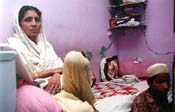 "We have tried to investigate many of these
encounter deaths," says advocate P A Sebastian, general secretary,
Committee for Protection of Democratic Rights, while discussing
an aspect of the problem. "The trouble is that people do
not come forward to help us, to give evidence. They fear the police
may harm them. Then again, the prevailing attitude is, if the
police names someone as a gangster, they must be right. And the
average citizen believes that a gangster gets whatever is coming
to him.
"We have tried to investigate many of these
encounter deaths," says advocate P A Sebastian, general secretary,
Committee for Protection of Democratic Rights, while discussing
an aspect of the problem. "The trouble is that people do
not come forward to help us, to give evidence. They fear the police
may harm them. Then again, the prevailing attitude is, if the
police names someone as a gangster, they must be right. And the
average citizen believes that a gangster gets whatever is coming
to him.
"To make it worse," adds Sebastian, "even
gangsters themselves, and their families, are reluctant to approach
us. So while we know there is wrongdoing by the police, we are
helpless to nail the ones responsible."
In other words, when all said, little is done.
Except that the 'encounter' toll just moved
up to 91, and counting...
|







